A flow-form of physical and visual theatre, circus, and site-responsive performance weaves its way through the diverse landscapes of Brazil, as told by Marilia Ennes, co-founder and co-director of ParaladosanjoS
Let’s follow the journey of ParaladosanjoS – a performing arts group I created in partnership with actor and director Marcos Becker, in 2001, in the Barão Geraldo district of Campinas – a city in São Paulo state, Brazil.
Looking back, we can see the panorama open up, two decades of journeying stretching out to the horizon, revealing our remarkable artistic trajectory.
Reflecting on the impulse that moved us, as a young couple, to create a group that this year (2021) celebrates its twentieth anniversary, I realise that there is a resilient and resistant force that feeds these bodies of ours, enabling us to continue dreaming and creating, even when we have realised that the intensity and the fluency of this impulse can vary, as doubts arise and tiredness hits – although it does not dissipate completely, because somehow the need to live through our art is (and was) stronger than the obstacles that cross our path.
I like to imagine this force, or impulse, as the water of a river that flows from a spring that is difficult to access, in a place that is practically impossible to find; then it remains low and winds through the land, forging the way and widening the space. There are stretches where the volume increases considerably, as it meets other rivers, together creating waves and varying currents, as they head towards the sea. Wherever they pass – depending on the combination of minerals, the type of land, the flora and fauna – they help to compose the most diverse landscapes imaginable. I take as my reference point this land that I inhabit – Brazil – which houses a set of climates and microclimates that form different natural biomes in their life systems; these in turn, composing landscapes that bring tears of joy to the eyes, they are so beautiful and full of life: pure aesthetic delight, art and creation at full power.
Thus, the creative impulse of the bodies that practise this (re)existence tactic that is ParaladosanjoS are like this force – a mixture of water and current that makes a river. Something inexplicable, which does not inhabit rationality, but instead lives within creative passions – which, like the flow, make way and expand the space to compose landscapes, sometimes on their own, sometimes in the company of others, causing real rapids that tear through where they pass.
The landscape in this story is a reference to the varied artistic languages that we have inhabited over these past 20 years. With the body (and its momentum) as a guide, we travel through hybrid places, passing through the fields of physical theatre, stirred with the scents of visual theatre, entangled by the rhizomatic mangrove of circus, and the shining dew of performance art – sometimes all of these mixed together.

In the Beginning
We started with physical theatre and aerial acrobatics, two techniques that enchanted us with the almost archaeological process that they presented to our bodies, sparking a search for a performer’s voice through the practice of listening to oneself and to the other; building on the perception of rhythmic subtleties, and the effort contained in the work of polishing our muscular force and sensitivities through the poetic form that feeds the action. Circus, especially aerial acrobatics, adds more elements to this search for a voice, as it brings with it the impetus of dexterity, courage, the limits of physical risk, and an expansion in the perception and occupation of space. At first, our interest was in moving from floor to air, to literally take on other perspectives.
Stories Told by the Body
The first shows created in the landscape that existed between physical theatre, circus and performance were Euétheia – a compliment to madness (2003), a solo by Marcos Becker directed by Adelvane Néia; and Tchu-Tchu-Tchu – an aero-acrobatic adventure (2004), a piece co-devised by the company.
Euétheia was inspired by Erasmo de Rotterdam’s Praise of Madness. It stages a day in the life of a man who is cloistered from the world. He spends his time making paper birds, inventing landscapes into which he breathes life. The show stems from a result of coding matrices of personal dance, and a corporeal mime inspired by Goya’s lithographs.
Tchu-Tchu-Tchu, by contrast, is a fun story – inspired by 1960s cartoons and enacted through aerial and ground acrobatics and physical comedy – of two bathing couples who are relaxing on the beach when they are surprised by a terrible but lonely shark.
We have subsequently created several shows based on what we call ‘suspended narratives’ including Cabeleira Doida (2019), my solo show directed by Natália Mallo, aimed at family audiences, and challenging racial and gender stereotypes around appearance in general and hair in particular; and Crossroad Contos Urbanos (2010), directed by Marcos Becker, which transforms the stage into a street on which street-life characters – familiar to any big city – walk fast, bump, look at each other, attack each other, fall in love or take advantage of others’ distractions. All of this whizzing by in the instant of a photographic flash.
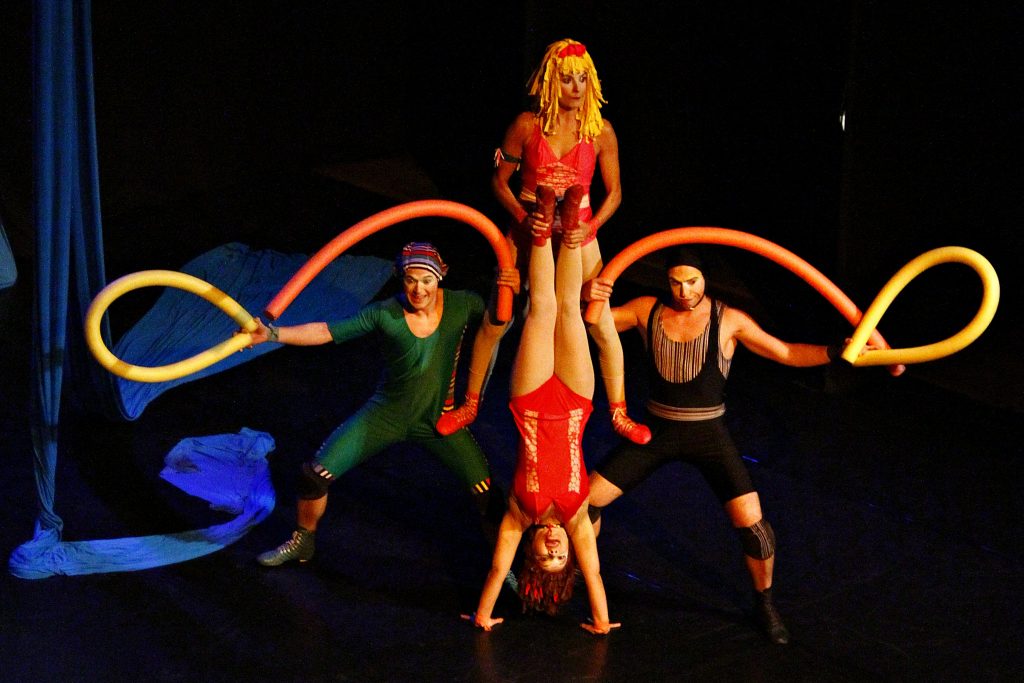
Expanding the Territory
In parallel to our creative process, in order to expand our field of work and as part of our research methodology, we have developed workshops in the territory that has become known as social circus, often in high-need and socially deprived communities. We’ve found that circus really works the relationship between risk and playfulness and thus helps to develop self-esteem; and the mix of sensations and the development of physical skills helps to nurture more collaborative social relationships. It all works directly to produce what the philosopher Spinoza identified as the life-enhancing joyful effects experienced by the mind through the body.
At the same time, ParaladosanjoS shared its creative methodology with a dozen new professional groups brought into the fold; seeking to integrate circus and theatre techniques that involve physical dexterity, thus creating a poetic repertoire of actions and images for the construction of visual-led narratives. Becoming a kind of incubator for new groups; these encounters led to the creation of new groups, including The Sabatino Brothers and Cia Oruã; and led also to national and international collaborations aimed at sharing experiences and cultural exchanges, among which I highlight: Lume Teatro and Grupo Ares (Brazil), Clipa Theatre (Israel), and Aurelius Productions (UK). From these artistic partnerships many very different shows emerged, including Molhados & Secos and As Gemeas.
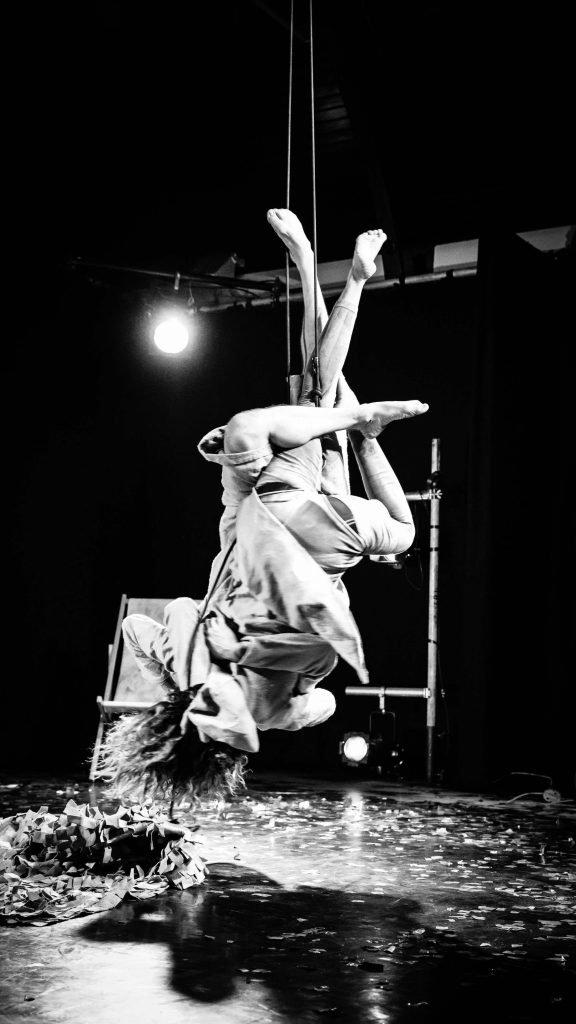
Molhados e Secos
Molhados e Secos (Wet & Dry), which toured widely in Brazil and was presented at the Edinburgh Fringe 2016, was inspired by true-life stories from people who have suffered some kind of brutal intervention from nature in their lives, whether due to the abundance or scarcity of water – flood or drought. The theme addressed in this show is current and controversial: natural catastrophes that result in great destruction of inhabited places, destroying the small private havens and homes of human beings; thus opening up a discussion about the social implications arising from these disasters, as well as providing an opportunity to reflect on the fragility of human life in the face of the force of nature. The show is a series of fantastical and highly visual dramas and comedies about the human being’s ability to be able to dream, to recreate themselves in the face of catastrophes and extreme situations. It was created in collaboration with Israeli company Clipa Theatre. (Reviewed at the Edinburgh Festival Fringe for Total Theatre Magazine online by Thomas Wilson.)
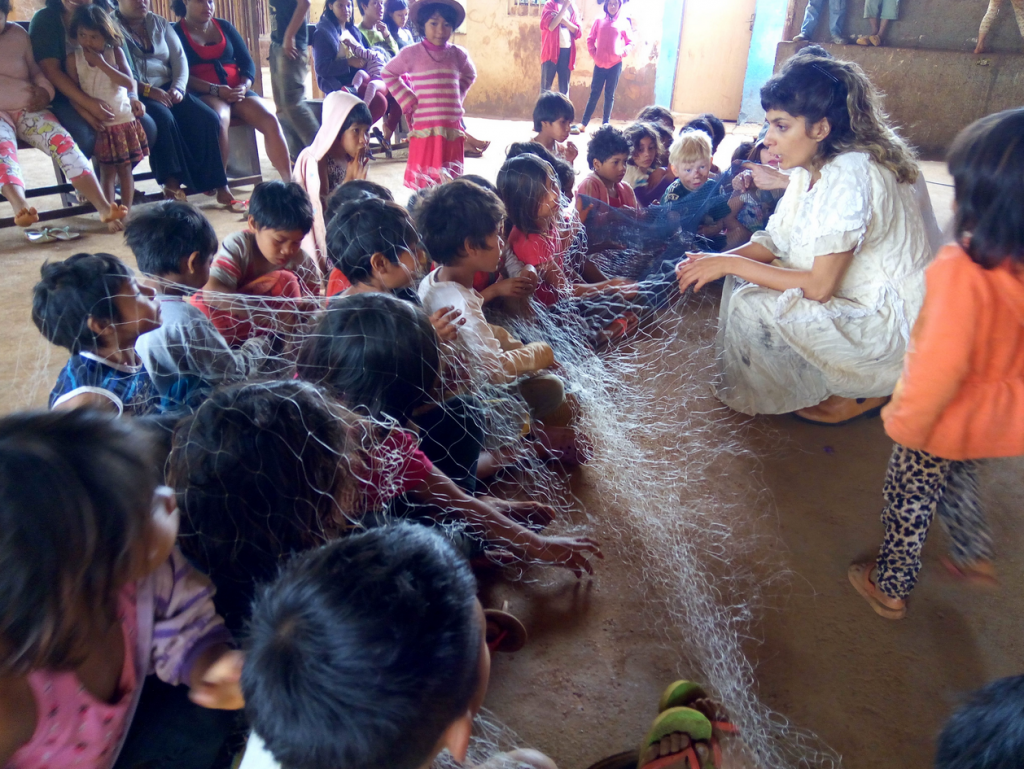
Deep Brazil
Once we’d decided to move out of formal indoor theatre spaces and started adding streets and community spaces to our environment, we discovered that the sky was our limit – and found ourselves flying through trees to the sound of church bells. In the same spirit of discovery, we started to shift the type of audiences and communities that we presented our work to, now entering so-called ‘deep Brazil’ – going to places that are nowadays part of a forgotten, neglected, simpler, less urbanised Brazil, often more precarious, seeming to exist in another time. In several of these places, precariousness was not synonymous with cultural poverty, quite the contrary – we encountered communities extremely rich in cultural and social knowledge, integrated, responsive, affective. We come to understand that we were now balancing ourselves on the wire-line between cultural and social intersections, in addition to our continuing exploration of the aesthetic hybrid of artistic languages. We found ourselves going back again and again to these ‘deep’ spaces in hidden Brazil. Our collaborative project Pontes Integradas took us into caipira (countryside) and caiçara (shoreline) communities, from remote islands to sugar cane plantations, co-creating work with and for farmers and fishermen. A culminating show, PiraÇara was presented in residency in a bar in central São Paulo – but we were always clear that the making of this show was just one aspect of the project, not the sole purpose.
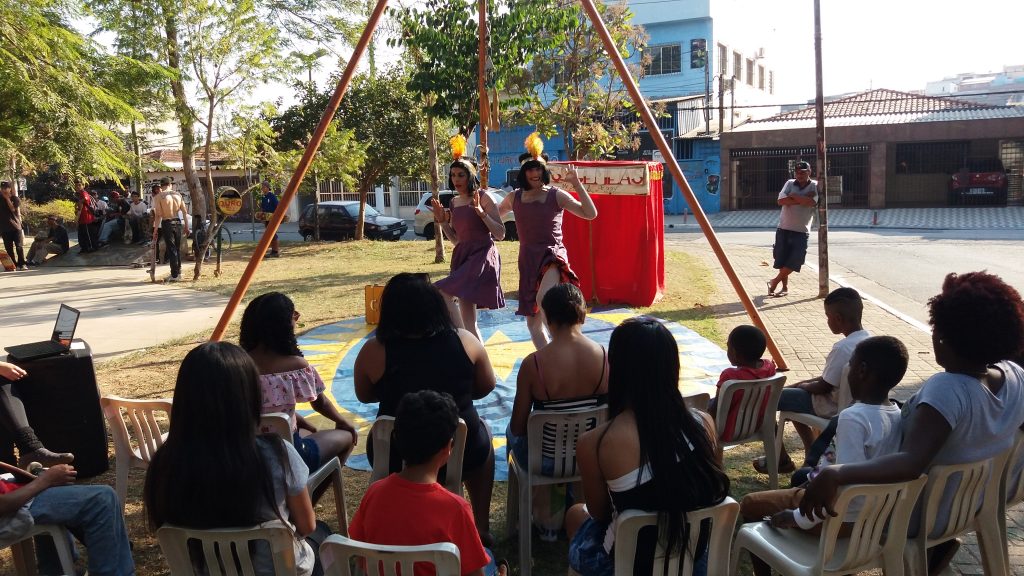
As Gemeas
The next project, As Gemeas (The Twins) (2017), was a more straightforward creation – a static show intended primarily for outdoor spaces, at festivals or in community settings. It is a joyful Vaudevillian hybrid of circus-theatre, clown, quick-change, and eccentric dance, which is very loosely inspired by the writings of English novelist Angela Carter specifically honouring (Nights at the Circus and Wise Children). It was created by the two ParaladosanjoS founder-actors, who both perform in the piece, in collaboration with UK company Aurelius Productions; with director, dramaturg and choreographer Dorothy Max Prior, and multi-instrumental composer and musician James Foz Foster. The show can be performed indoors or outdoors, and it has toured consistently since its creation in 2017, playing in regular municipal theatres, arts festivals, streets, and village squares in remote communities.
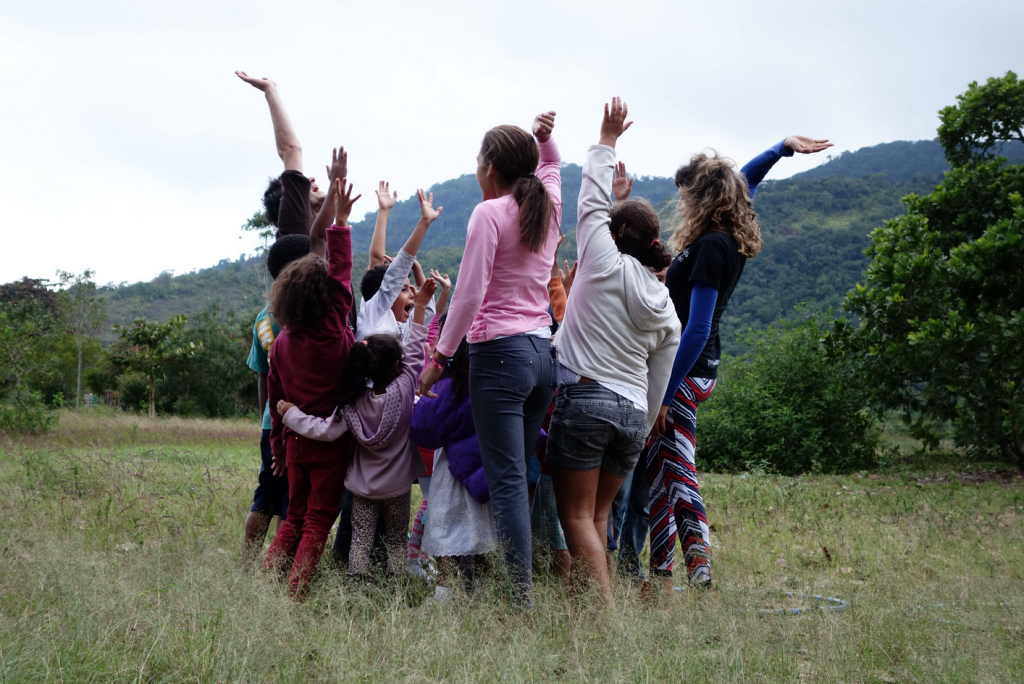
A Truly Diverse Environment
We create for hummingbirds and parrots but without forgetting the jaguars, the yellow alligators and the anacondas. Each new project has been shared with different audiences. We have never lacked corners of the forest in which to compose this new landscape that we were forging, as ParaladosanjoS journeyed on. Sometimes, we start the week by performing in juvenile prisons, ending at the São Paulo municipal theatre and passing through micro-communities of fishermen, indigenous and quilombolas (descendants of runaway slave communities) on the way.
We understand that this strength that inhabits us, not only moves us, but also creates and (re)creates us continuously as contemporary citizen artists. And that our craft can move through the construction of new possibilities – not because we teach something to someone, but because we learn to be porous and allow ourselves to be pollinated by the transits of the forces that make up the environment; or to throw seeds into the inhabited soils.
Our river-force was sometimes channeled or driven by some geyser that we found along the way, which surprisingly launched us to other landscapes – not tropical, beyond the sea that bounds our country – or maybe it was the meeting of rivers coming from different continents, since the whole river ends up at sea. We find ways of doing and means of researching that have interculturality as a central element, where listening, and ethical and poetic responsibility, become the modus operandi. Is it possible to determine a way to do it when we are in constant fluidity?
We soon realised that we no longer occupy the same landscape as we had at the beginning of the journey. After all, we had crossed several banks and often stopped at a river bend to settle for a while, or to mix our waters with other elements.
We started to embrace this space between artistic, pedagogical and social languages not only as elements of the composition of the work, but also of itself, for its own sake – opening the way to discover other ways of being, and to share experiences that bring us closer as humans, full of dreams that keep the power of joy in the poetics of life.
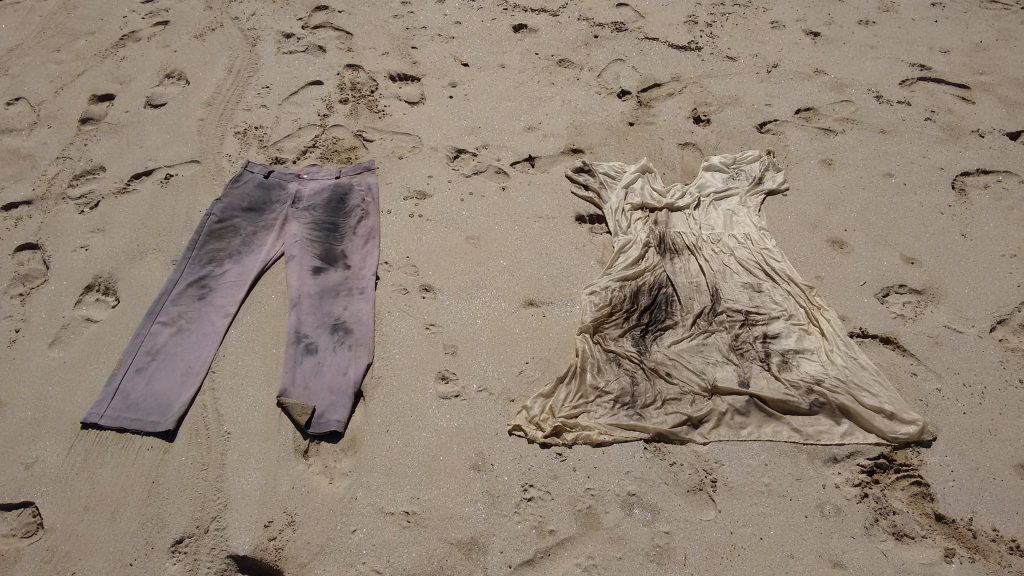
Towards a Post-Colonial Performance Landscape
I hope you will excuse me a brief outburst about this country called Brazil – and perhaps this is true in several other places in the global south – in which the practice of existence is in itself a great creative struggle; and the act of gaining recognition in the face of this force has been an important issue in contemporary times, and consequently for very many artists and groups who are representative of these times, including ParaladosanjoS.
Our colonialist and extra-activist history takes this recognition away from us, because at all times we look to the global north as a reference point to determine what is good and powerful. This is one of the effects of a cultural force imposed on our part of the planet – the direct outcome of colonialism: a discourse of power that causes the erasure of oneself, and the appreciation of the other from the outside. Always the outsider…
But if we have eyes to see the beauty and strength that creates us, such a comparison would certainly not be possible, because although the shape of the work sometimes brings its own references, which are outside European standards, the creative force is such that it continues to invent beautiful and fantastic worlds without even having a context to call our own. This growth of knowledge of our own strength, which allows us to see our creative and cultural power, is called ‘decolonial practice’. I leave here the invitation to understand and recognise this movement, at this moment in time.
And finally, the risks of being an artist were many, and still are many. This is because in these lands, which are so full of magnificent colours and shapes, there is also a specific culture, and cultural assets to be preserved, alongside those renowned rivers, landscapes, animals, and rainforests. We live in a place where the ground that supports culture needs to be invented and claimed with each new step. We are forging a path just as the river does – because before the water arrived and formed the river, there was no path. But this is a story that can go on for centuries.
We took it , and ran with it, and can now take the opportunity to appreciate the landscapes and terrains created by and seeded by ParaladosanjoS, which like the river, keeps the force of the current in its heart.
Featured image (top). Photo by Irmãos Bueno
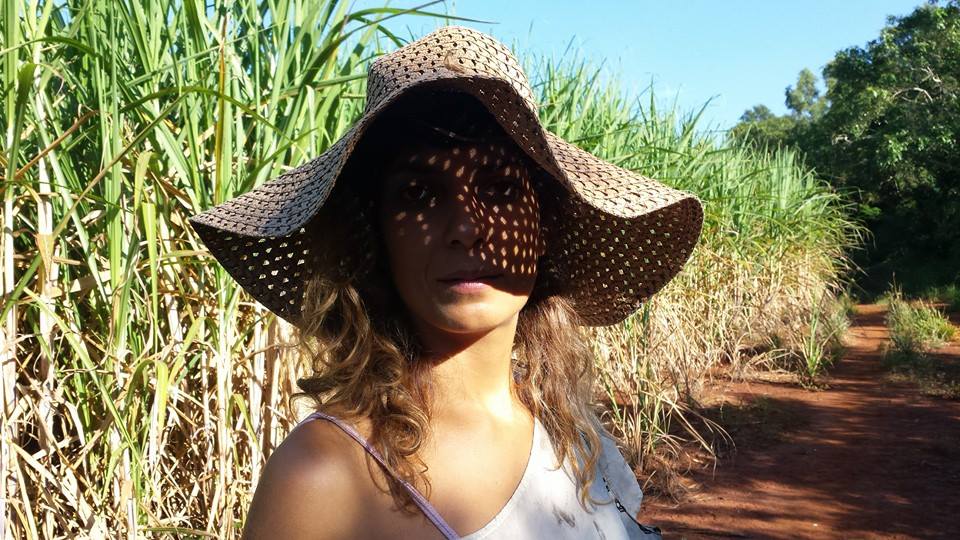
Marília Ennes is founder/co-director of ParaladosanjoS (Brazil) who celebrate their twentieth anniversary in 2021. She has recently been appointed as Professor at the Department of Corporeal Art at UFRJ (Universidade Federal do Rio de Janeiro). Marilia took part in the Total Theatre Artists as Writers programme 2020.
@paraladosanjos
For writings on Pontes Integradas by Dorothy Max Prior, who contributed to the project with the help of an Artists International Development Fund ACE/British Council grant, see http://pontesintegradasmax.blogspot.com/

